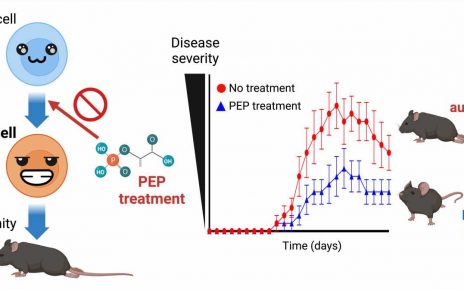NEW YORK (Reuters Health) – In patients with non-small cell lung cancer brain metastases (NSCLCBM) treated with immune-checkpoint inhibitors (ICIs) and upfront steroids, a low neutrophil-to-lymphocyte ratio (NLR) was associated with lower overall survival in a single-center retrospective analysis.
“With widespread implementation of ICIs for treatment of NSCLC, many clinicians have concerns that the immunosuppressive properties of steroids will diminish the efficacy of immunotherapy,” Dr. Manmeet Ahluwalia of Baptist Health’s Miami Cancer Institute in Florida told Reuters Health by email.
“We had hypothesized that the NLR would be a surrogate marker for immune activity; however, we found that this ratio did not predict intracranial response after ICIs, but did predict overall survival,” he said.
“Other studies have shown that NLR predicts survival after chemotherapy, stereotactic radiotherapy, and surgery,” he noted, “and we believe that NLR is best thought of as a strong predictor of survival in NSCLCBM.”
As reported in Scientific Reports, the team retrospectively investigated overall survival (OS) and intracranial progression-free survival (PFS) in 171 NSCLCBM patients treated with ICIs. Participants’ mean age was about 64; about 85% were white; and in the upfront-steroids group, 37% were men, whereas 60% were men in the no-steroids group.
The ICIs included nivolumab (101 patients), pembrolizumab (52), atezolizumab (14), durvalumab (3), and ipilimumab (1).
Thirty-six participants received steroids within 30 days of the start of ICI therapy.
On multivariable analysis, upfront steroids were associated with significantly decreased OS (median, 10.5 vs. 17.9 months) and intracranial PFS (5.0 vs. 8.7 months).
When NLR and upfront steroids were modeled together, there was a strong interaction, indicating that the impact of steroids depended on the patient’s NLR.
Fifty-three participants had an NLR of 5 or greater before starting on an ICI, and this was indicative of worse OS (10.5 vs. 18.4 months) but not intracranial PFS (7.2 vs. 7.7 months).
In a subgroup analysis, there was a significant difference in OS with upfront steroids (26.1 vs.15.6 months) only in patients with an NLR<4.
The authors conclude that in “patients with a low NLR, steroid use decreases the efficacy of ICI. These results can inform clinicians about the impact of steroids in patients treated with ICI.”
Dr. Ahluwalia said, “Due to the retrospective nature of the study, all results should be interpreted with caution. However, if studies from other institutions confirm our findings, this work could help guide clinical decision making when it comes to the use of steroids concurrently with immunotherapy.”
Dr. Vamsidhar Velcheti, medical director of thoracic oncology at NYU Langone’s Perlmutter Cancer Center in New York City, commented in an email to Reuters Health, “NLR is a simple, inexpensive tool that can be used for prognostication. We and several other groups previously found an association between high NLR and poor outcomes from immunotherapy.”
“The link between NLR and underlying genomic associations is still unclear and is an area of active investigation,” said Dr. Velcheti, who was not involved in the current study. “NLR could potentially be used to identify patients that may require combination-based strategies to overcome tumor driven myeloid cell predominant immune suppressive phenotype.”
SOURCE: https://go.nature.com/3e0KsrZ Scientific Reports, online April 5, 2021.
Source: Read Full Article



